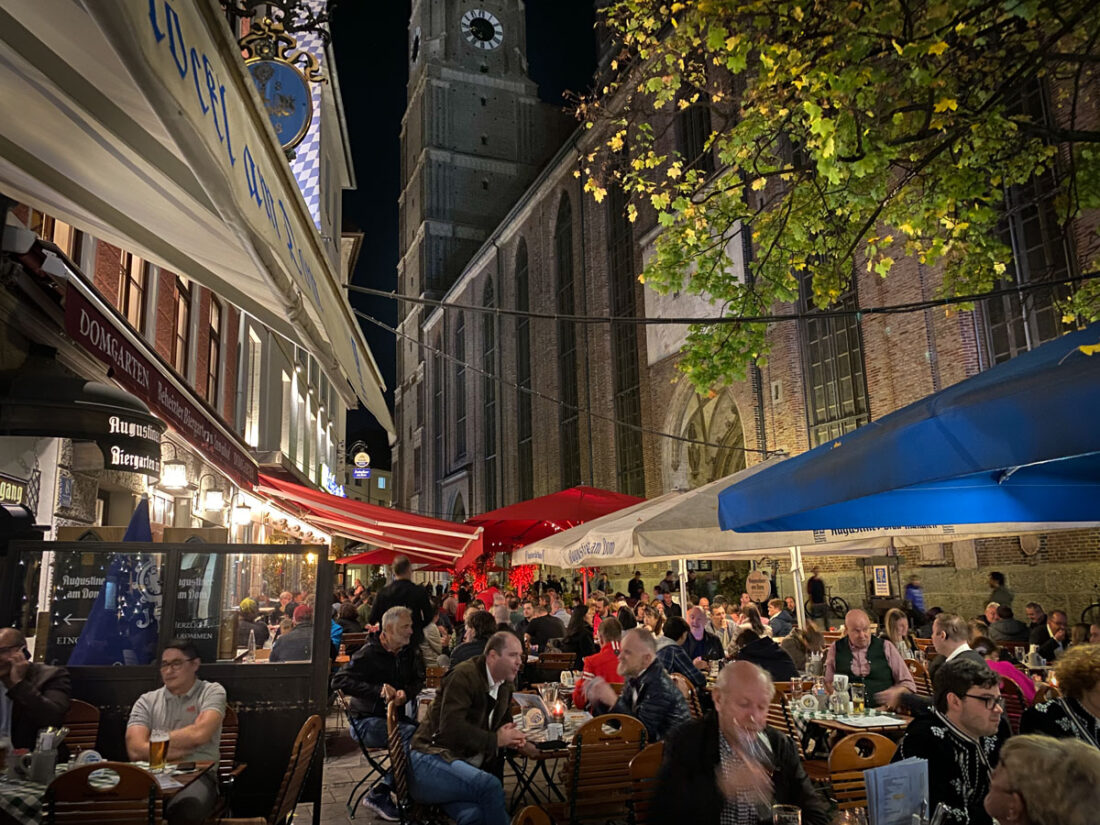
The devil at the beer garden
My mother was an artist, but her pallet for rebellion was limited. When I was growing up and she was really, really fed up—a fight with my father, or a particularly bad period of ennui—she would always say that if she’d been a different type of woman she’d go and hang out in a beer garden. To her, this was getting out the big gun. She always said this with a bit of wistfulness, but also a tiny edge of fear tinged with her fascination. Like the things that happened in beer gardens were not to be fully imagined as one might be contaminated by going too deeply into one’s inner beer garden. Born in 1920 of very conservative parents, she lived a constrained life, even after she married my father.
You can only imagine the space, both broad and deep, that a beer garden inhabited in my young brain. It’s such an innocuous, innocent sounding word. I’d never seen one, or heard of one outside of my mother’s yearning for rebellion and a taste of what it might mean to be bad. What possible things could happen there that exerted such a fascination to my mother? In a beer garden could you even see through the foliage—did the sun ever shine? Did the plants serve beer? What else could be happening there besides beer that was so wicked? It had been many years since this archetypical den of sin had ever crossed my mind, but earlier this week John and I found ourselves in Bavaria for a shoot and suddenly we were surrounded by beer gardens.
Most were, shockingly to me, merely a fancy name for an outdoor patio where beer was served. No jungle, no woman-eating plants, no scantily-clad servers. Just some picnic tables. What a letdown.
Our last night of the shoot we made it into Munich and went to a beer garden for bratwurst that our client had recommended. The Nuernberger Bratwurst Gloeckl am Dom fit the description of what I’d said that we wanted. Somewhere in the old section that had good local food. It turned out to be very happening, but not at all hip—the beer garden (i.e. outside tables) was packed and people watching was fascinating, and very different from our village, London, or Paris—all of which are pretty damn distinct already. Mainly men, mostly comfortably plump, largely in groups. A few couples on date nights. A man at the next table, who looked like a relative of Einstein, rocked a thick head of pure white hair extending in all directions, its exuberance matched only by his moustache. The table behind us had a group of teenage boys wearing some type of antique military uniforms and one carrying a large flag. A soccer team arrived. A popular dish seemed to be a platter of 150 sausages, all cooked over the inside beech wood fire.
The whole beer garden sat in the square in the shadow of Munich’s cathedral, the Frauenkirche. Haunting as it loomed in the dark—many places in Europe, including our village, are not turning on lights to illuminate monuments due to the energy crisis from the Russian invasion of Ukraine. Doing a little research I discovered that the cathedral is well known for its Devil’s Footprint, a black mark resembling a footprint near the front door, which has several competing theories about what the devil, who clearly was the only entity who could possibly have caused such a mark, was really up to.
But my mother would have known exactly why the devil was hanging out in proximity to the beer garden. I wish that my now self could have told her then self that it would have been a powerfully good thing for her to have hung out in a beer garden. That trying so hard to always be good cut off a part of herself that I think she’d rather have enjoyed and would have given more spice, texture, and fulfillment to her life. That packs of men often just want beer. That we can trust ourselves, make mistakes, and find redemption. And that sometimes that dark shape on a floor tile is maybe just a mark from the kiln rather than proof that the devil lives in a beer garden.






No Comments